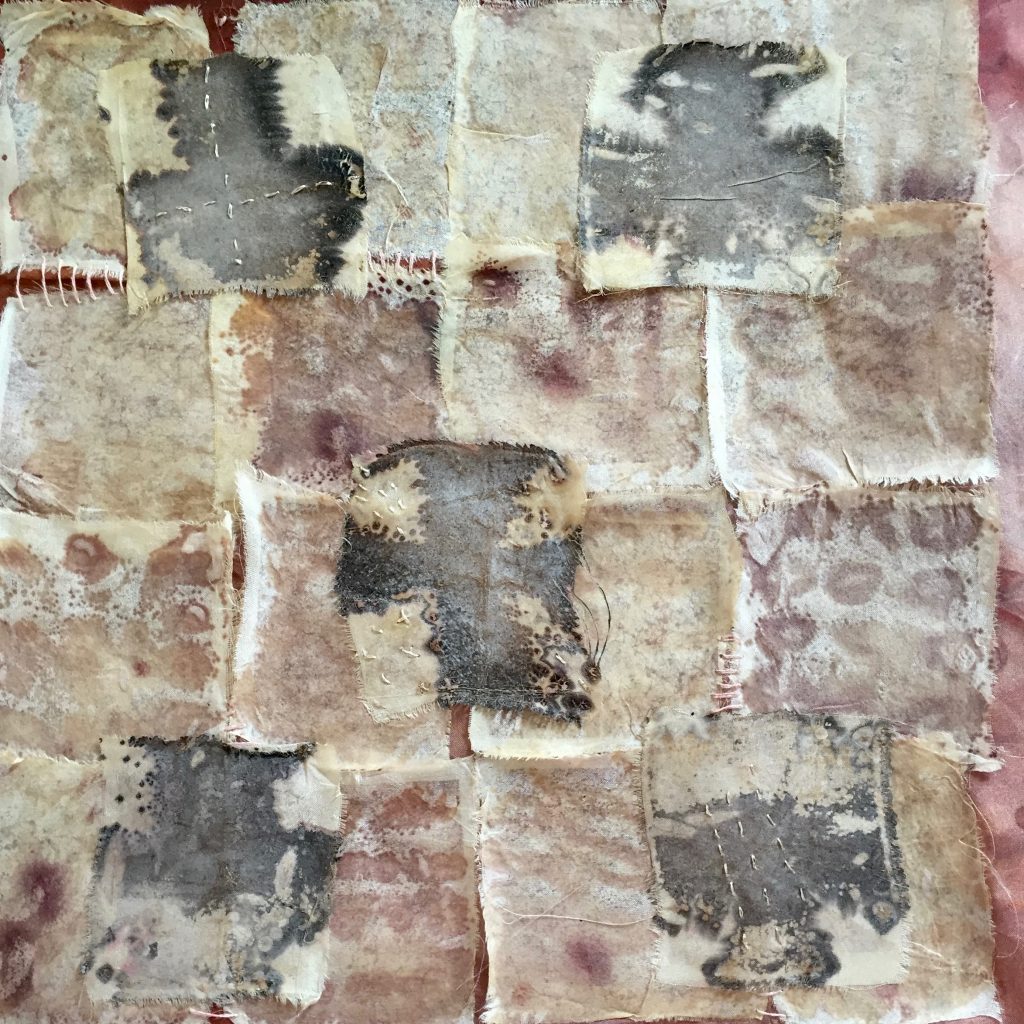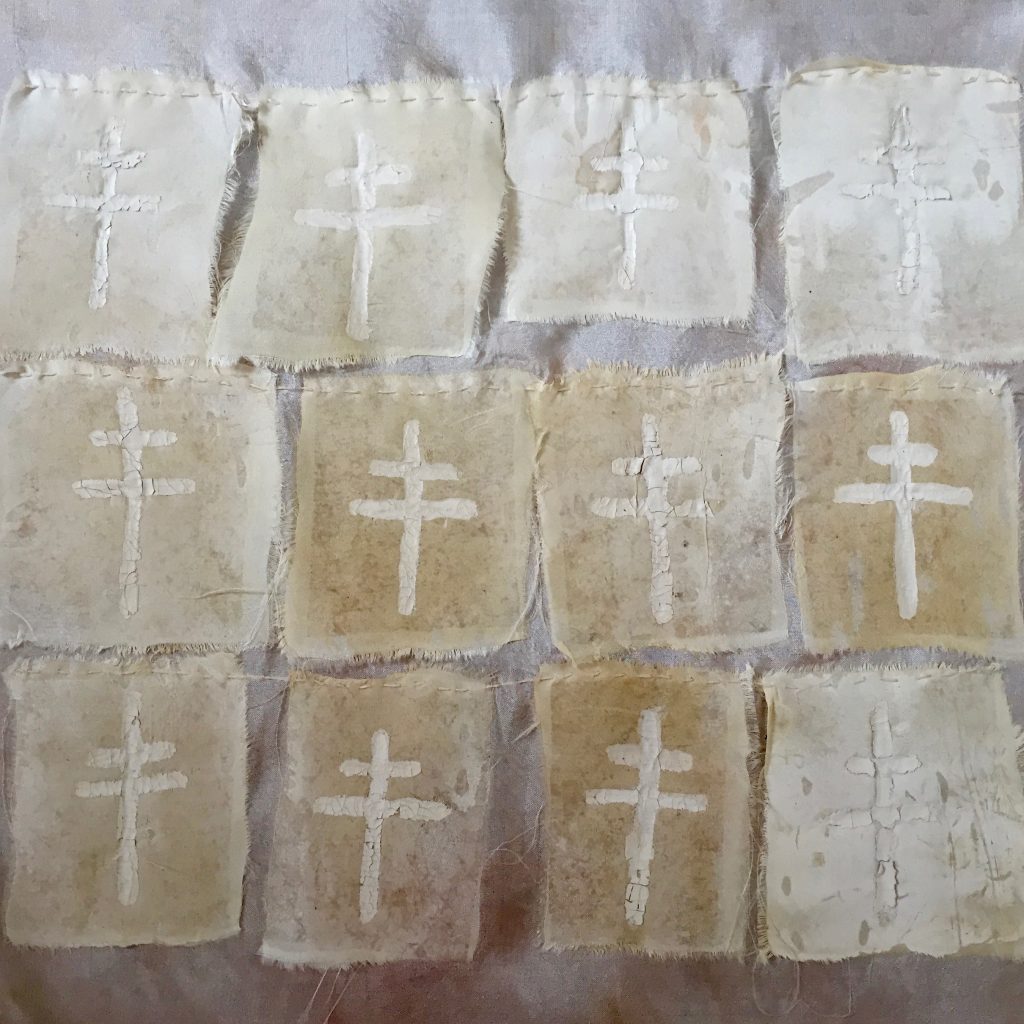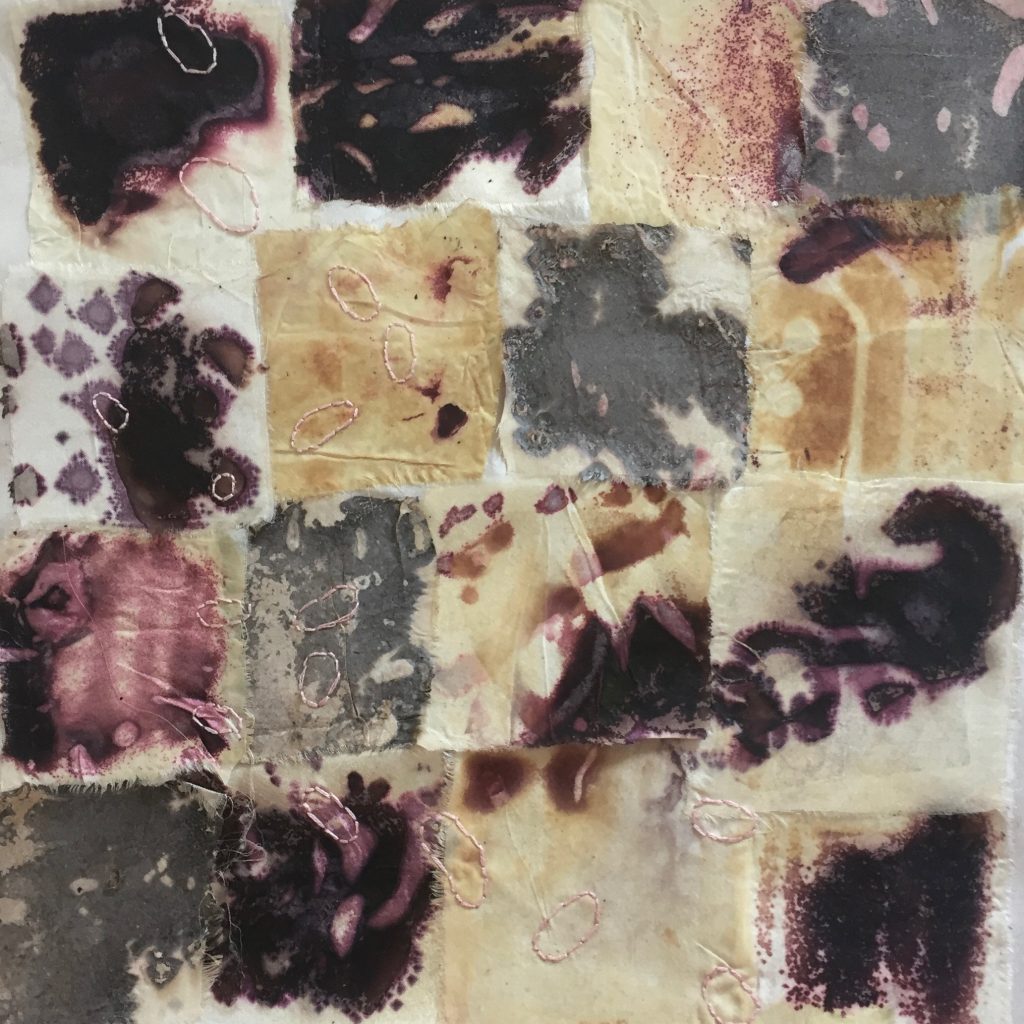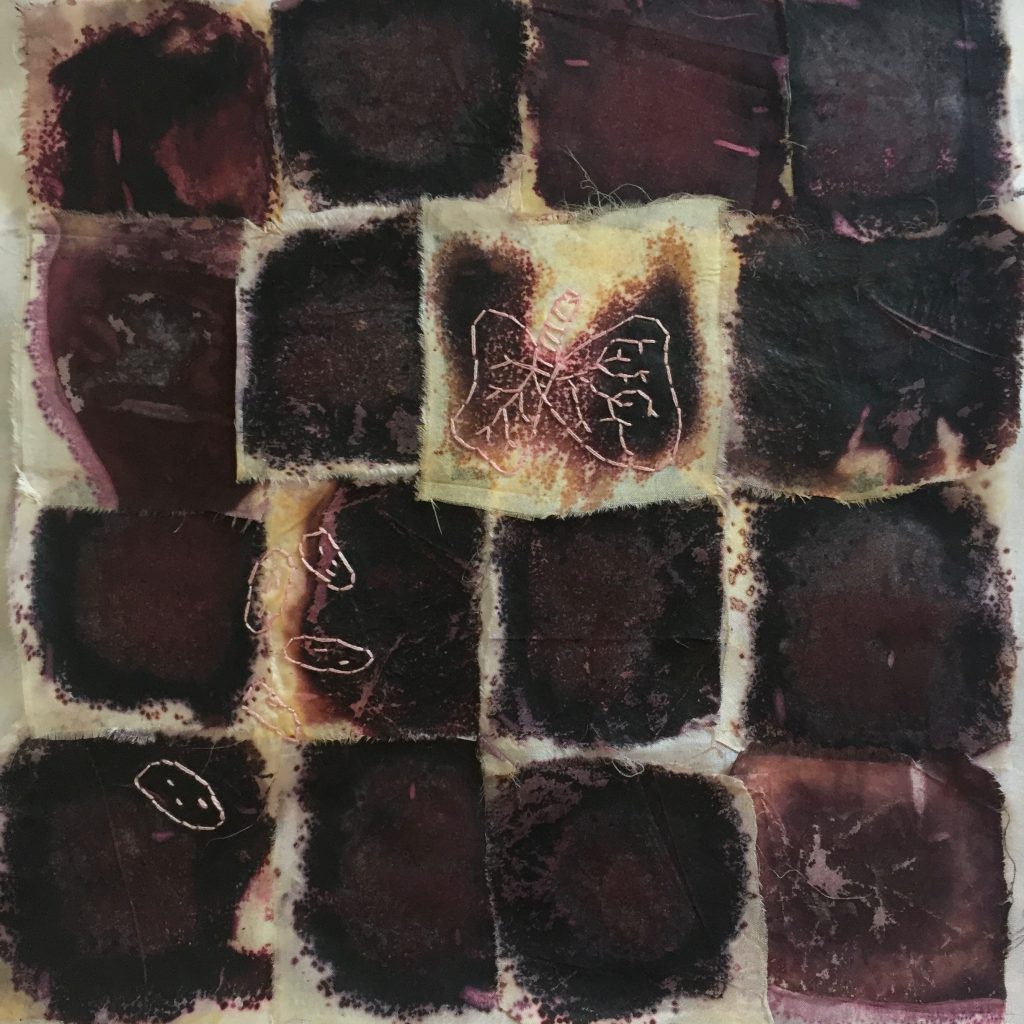“The Hunt for New Antimicrobials” (2016-17) was a collaboration between Anna Dumitriu and Professor Maggie Smith and Stuart Priest to explore the urgent issue of antibiotic resistance and the research being undertaken at the University of York in the search for new antimicrobial substances. The artist’s residency led new body of artwork and a participatory public workshop exploring new research and reflecting on the current and future impact of antibiotic resistance, aimed at a diverse, non-scientific audience.
Prior to the residency Dumitriu stated “I am fascinated to embed myself the research being undertaken at the University of York to artistically explore the urgent hunt for new antimicrobial agents to combat drug resistant infections. I will work with the scientists hands on in the lab and use the tools and techniques of microbiology as artistic media. Building on my previous artistic work around the history of antibiotics for Tuberculosis, I will, for the first time, be able to investigate the lifecycle of Streptomyces and develop an artwork around the struggle to synthesise antibiotics.”
List of Works
Stress

Stress (2017) work focuses on Streptomyces coelicolor grown on nutrient agar, a type of bacterial growth medium derived from seaweed. The bacteria produce antibiotics as a stress response and produce a variety of red and blue antibiotics over time. Some of the bacteria were grown for many weeks, others just a few days making the differences in their appearances. These soil bacteria have been sterilised prior to exhibition and are harmless to humans.

“Crusade” (2017) is impregnated with Streptomyces griseus a soil bacterium from which the famous antibiotic Streptomycin was derived. The organism was drawn on to cloth in a representation of the two bar Cross of Lorraine which was used widely to represent the ‘crusade against tuberculosis’, notably by the American Lung Association in the 1950s. Until Streptomycin the only treatment for this dreaded disease was rest. Tuberculosis still infects around a third of the world’s population, particularly in low to middle income countries. Since it is becoming increasingly antibiotic resistant it is important that we develop new ways of treating it and rapid techniques for diagnosis particularly in locations where high tech equipment is not available.


“Viral Interventions” (2017) embroidered diptych is made using Streptomyces coelicolor bacteria, which produces red and blue-coloured antibiotics, normally lives in soil and is harmless to humans. The antibiotics are normally produced when the bacteria are challenged by their environment. The bacteria were grown on a special kind of agar that makes them produce lots of antibiotics. In one image more red antibiotic is produced than blue. In the other image only the blue antibiotic is produced because the bacteria have been genetically modified so that only the blue antibiotic is synthesised. The 22 genes required to make ‘blue’ have been pasted into the chromosome of a bacterium that cannot normally make any antibiotics using phage integrases derived from viruses that infect bacteria (but not humans). The antibiotics have been used to stain the silk, which was grown with the bacteria in the lab. Patterns were drawn on some of the squares of silk using the viruses which lyse the bacteria leaving an absence of growth.

“Contamination” (2017) combines silk squares grown with Streptomyces bacteria on plates of agar jelly (bacterial food made from seaweed). Here, the soil organism, which produces colourful antibiotics, can be seen in interplay with other contaminants likely to have come from the artist’s body when she was preparing them. The stress of competing against other species bacteria increases antibiotic production (the coloured areas). Contaminated plates are a risk in the lab when trying to grow and study bacteria. Normally they would be discarded by scientists but here the artist has used them to highlight the impact complex bacterial ecosystems have on bacteria in their natural settings.

“Red” is made from Streptomyces coelicolor bacteria, which produces coloured antibiotics, normally lives in soil, and is harmless to humans. The antibiotics are normally produced when the bacteria are under pressure (stress) in their environment and can be red or blue. The bacteria were grown on a special kind of agar that makes them produce lots of antibiotics and on silk they produced lots of red antibiotic to make this rich red colour. Different species of Streptomyces produce different antibiotics including streptomycin and erythromycin. Here the artwork references the huge importance this Streptomyces had on producing the first viable antibiotic treatment for Tuberculosis. Red seems to be an important colour in the history of antibiotics: in ancient times the dye madder root was used as a medical treatment (it is antimicrobial) and later Gerhard Domagk created Prontosil, a bacteriostatic derived from a red azo (coal tar) dye which predates penicillin.

Beyond the scope of the artists residency, several members of the team and event visitors contributed to Dumitriu’s ongoing, evolving participatory project “Ex Voto” (2017 – onwards) which explores the dramatic impact of antibiotics and antimicrobial resistance. The piece, which enable stories of scientists, medics, patients and members of the public to be told and shared. The artwork, originally developed with Dr Nicola Fawcett at the University of Oxford enables the sharing of individual stories, allowing participants to talk about the impact that infection has had on them through making ‘votive offerings’ based on images of bacteria.
Exhibitions and outcomes
York Festival of Ideas pop-up exhibition and drop in plasmid extraction and BioArt workshop on 11th and 12th June 2016.
“Viral Interventions” was exhibited at York Art Gallery as part of “ALIVE: Art Between Life and Science”. An exhibition catalogue was published.
“Microbe Stories” (solo exhibition) Blyth Gallery at Imperial College London from 22nd March – 7th May 2017.
“BioArt and Bacteria” (solo exhibition) at the History of Science Museum in Oxford (UK) from 28th September 2017 until 21st May 2017.
“BioArt and Bacteria” (solo exhibition) at Eden Project in Cornwall (UK) from 30th March – 1st June 2019.
“Art and Infectious Disease” (solo exhibition) for the Healthcare Infection Society’s 40th Anniversary Event, British Medical Association, London (UK), 19th and 20th May 2022.
Supporters
The residency has been supported by The Centre for Chronic Diseases and Disorders via funding from The Wellcome Trust and the TARGeTED Antimicrobial Resistance (AMR) Project via the EPSRC (Engineering and Physical Sciences Research Council).
Funded through the Artist in Residence Scheme 2016 of the Centre for Chronic Diseases and Disorders (C2D2) at the University of York. The scheme is supported by the Wellcome Trust [ref: 105624] and the University of York.
Collaborators Biography
Professor Maggie Smith did her first degree at Leeds University in Microbiology and Biochemistry. Her PhD was in Bristol on how antibiotics are taken into bacterial cells. She then embraced the (then) new gene cloning technologies during her post-doc years in Leeds and Glasgow, working on how genes are regulated. Her first post as a lecturer was at Stirling University, where she first started working with the antibiotic-producing bacteria, Streptomyces. She then moved to Nottingham and then on to Aberdeen and her research focused on phage-host interactions and how DNA is naturally moved around and rearranged within chromosomes. Now as Chair of Microbiology at the University of York, Maggie has a portfolio of research projects that range from antibiotic biosynthesis to antibiotic resistance.
